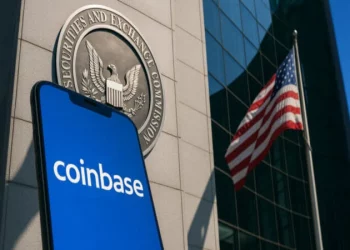The cryptocurrency landscape is undergoing a pivotal shift, with compliant digital assets increasingly positioning themselves as leaders in the long-term race. As regulatory scrutiny tightens globally, assets that adhere to legal frameworks and transparency standards are gaining traction, signaling a fundamental shift toward sustainability and institutional acceptance.
Regulatory Clarity Drives Mainstream Adoption
Regulators worldwide are prioritizing consumer protection and market integrity, pushing the industry toward compliance. For example:
Security Token Offerings (STOs) — Unlike their unregulated counterparts, STOs represent ownership in real assets (e.g., equity, real estate) and must comply with securities laws. This clarity has attracted traditional investors, with projects like tZERO and Polymath leading the charge.
Central Bank Digital Currencies (CBDCs) — Over 100 countries are developing CBDCs, designed to operate within existing financial systems. The digital yuan and digital euro, for instance, emphasize regulatory alignment and stability.
By adhering to anti-money laundering (AML) and know-your-customer (KYC) rules, compliant assets reduce risks of fraud and market manipulation, making them more appealing to institutions and retail investors alike.
Institutional Money Flows Toward Compliance
Institutions are increasingly wary of unregulated crypto projects. A 2024 report by Goldman Sachs found that 75% of institutional investors prefer crypto products with clear regulatory oversight. Key drivers include:
ETF Approvals — The U.S. Securities and Exchange Commission (SEC) has approved Bitcoin ETFs that track regulated futures contracts, allowing Wall Street to gain exposure without direct crypto custody.
Banking Partnerships — Firms like Coinbase and Gemini have partnered with traditional banks to offer compliant crypto services, bridging the gap between decentralized finance (DeFi) and legacy systems.
This shift reflects a broader trend: compliance is no longer a hurdle but a competitive advantage. Assets backed by auditable reserves, clear governance, and regulatory approval are better positioned to weather market volatility.
Risks of Non-Compliance: A Warning from History
The collapse of FTX and Terra Luna in 2023 highlighted the dangers of unregulated crypto. Projects that prioritized growth over accountability faced catastrophic failures, eroding public trust. In contrast:
Stablecoins with Full Reserve Backing — USDC and Paxos (PAX) maintain 1:1 dollar reserves audited by third parties, ensuring stability and compliance with banking regulations.
DeFi Protocols Embracing Regulation — Platforms like Aave and Compound now offer “permissioned” versions of their protocols, restricting access to users in regulated jurisdictions.
Non-compliant projects risk legal penalties, delisting from exchanges, and losing investor confidence—a fate increasingly common as regulators like the SEC and EU’s MiCA framework step up enforcement.
The Future: Compliance as a Baseline, Not an Exception
As the crypto industry matures, compliance is becoming a prerequisite for survival. Governments and financial institutions are unlikely to support assets that operate outside the law, leaving non-compliant players on the sidelines.
For investors, the message is clear: digital assets that prioritize regulatory alignment, transparency, and accountability are not just surviving—they are thriving. In a market once defined by wild speculation, compliance is now the cornerstone of long-term success.
As the industry evolves, the divide between compliant and non-compliant assets will only widen, solidifying the former’s role as the new standard in crypto.
Related topic:














